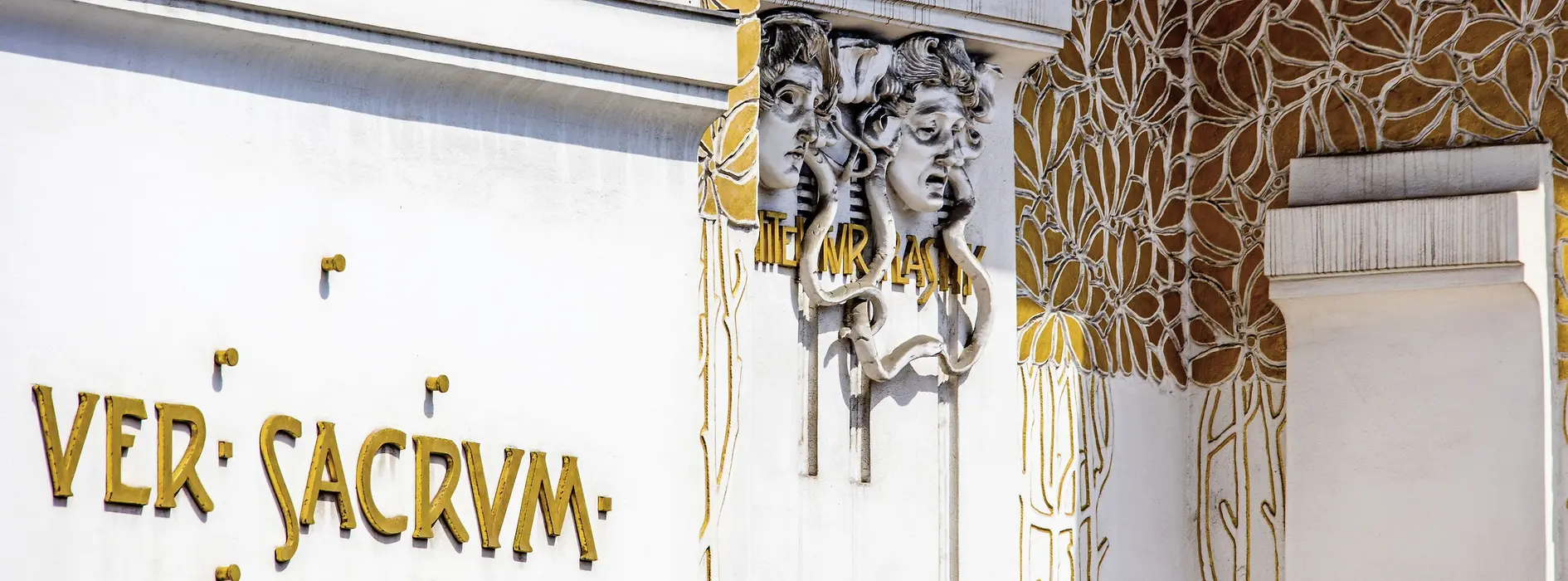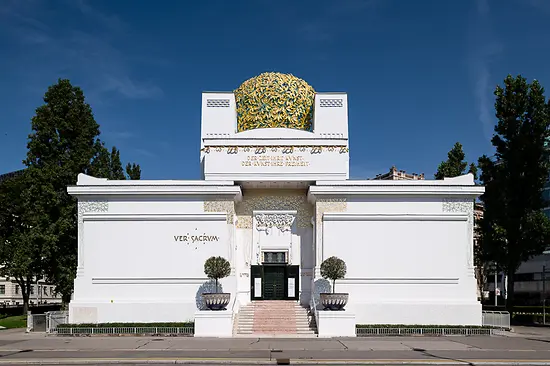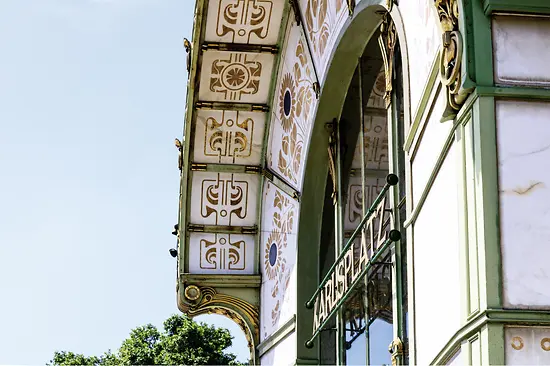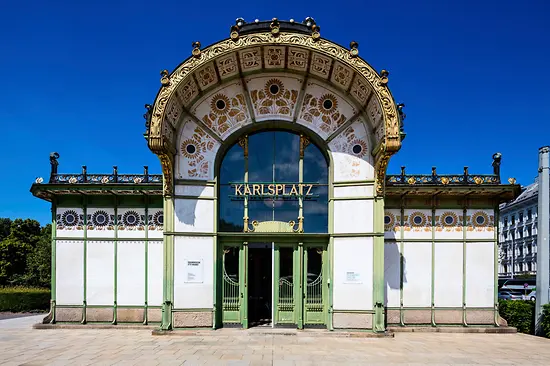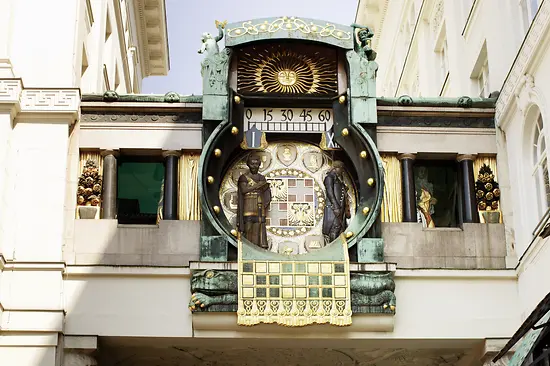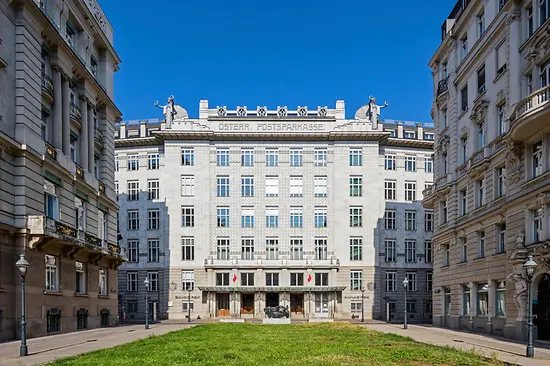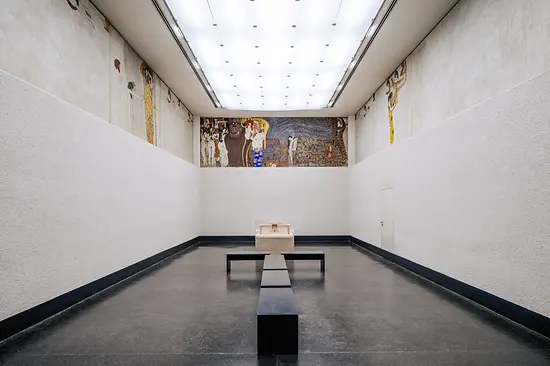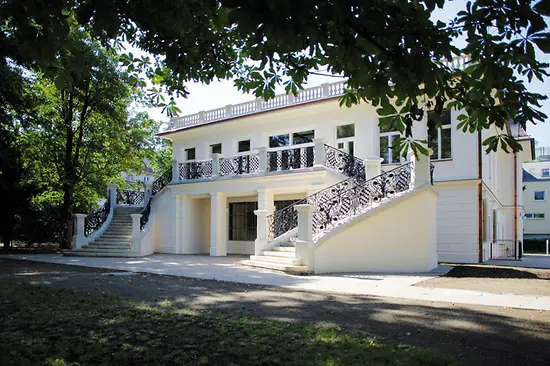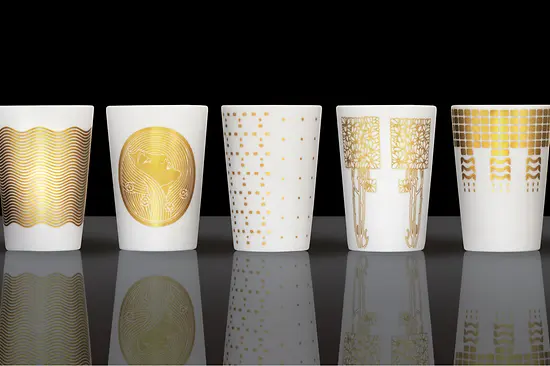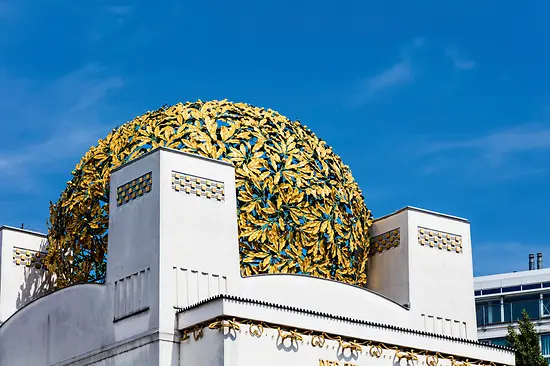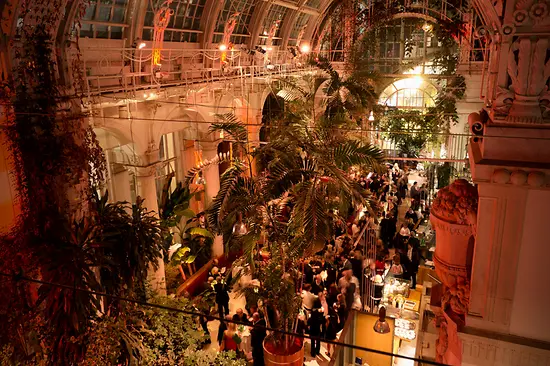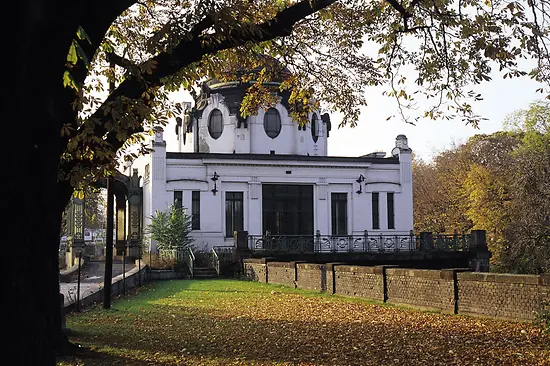Seven Art Nouveau highlights in Vienna
They were once artistic revolutionaries and were critically eyed. Today, the art world celebrates their style. The artists of the Art Nouveau period broke new ground back then. Away from the prevailing compulsion to cling permanently to the old. Otto Wagner, Gustav Klimt and many others went ahead and adapted their art to the new materials and possibilities. There arose a whole new style which, away from the canvases and studios, even left its mark on entire cityscapes. It also left traces in many places in Vienna that are still visible today. Vienna is therefore considered by many people to be the capital of Art Nouveau.
Display alternative text
Video 7 Jugendstil Sehenswürdigkeiten https://www.youtube.com/watch?v=2te6mkzPlZ8
We took a closer look at seven famous places where Art Nouveau can still be seen in Vienna.
Vienna Secession
When Gustav Klimt and a number of other artists left the conservative Künstlerhaus in 1897, they needed new artistic lodgings. One year later, they found what they were looking for in the vicinity of Vienna's Naschmarkt. Joseph Maria Olbrich had completed the Vienna Secession here in 1898 – a highly contentious building at the time. The critics were able to prevent the original location on the Ringstrasse boulevard, but fortunately not the basic construction of the Secession. The Secession thus remains one of the best known buildings in Vienna to this day. The impressive dome of golden leaves – also called the "cabbage" – can be seen from a distance. The rest of the Secession is packed full of Art Nouveau elements. A special highlight is the Beethoven Frieze by Gustav Klimt, one of his greatest masterpieces. Located in the basement, it interprets Beethoven's 9th Symphony over a length of 34 meters.
Strudlhof Stairway
In the 9th Viennese district, the Strudlhof Stairway connects Strudlhofgasse with Liechtensteinstrasse. Far beyond this practical purpose, the stairway is above all known for being an important structure of Viennese Art Nouveau. Johann Theodor Haeger even built himself a monument out of Mannesdorfer limestone with it in 1910. The curved steps, the green railings and the little fountains lend the Strudlhof Stairway its special character. Today, it serves as a popular photographic motif and event location for concerts. In 1951, the novel "Die Strudlhofstiege; oder Melzer und die Tiefe der Jahre" by Heimito Doderer made the stairway famous beyond the limits of Vienna.
Hohe Brücke
Admittedly, the Hohe Brücke is not one of the city's best known sights. But in terms of Art Nouveau, it is very important structure in Vienna. The first documented origins of a bridge at this location date back to the year 1295. Over the centuries, various bridges replaced one another. The Hohe Brücke in its current form dates to 1904. Today, it is a listed monument. The outer cladding of marble, the handrails decorated with ornaments, and the lovingly designed images of previous bridge designs make the Hohe Brücke an impressive representative of Art Nouveau. What is hiding behind the roller shutters in the side walls under the bridge? Nothing. They are purely for decoration.
Anker Clock
Our next Art Nouveau structure is also a bridge, but one that became famous for being a clock. This unusual transformation has served as a link between two buildings of the former insurance company "Der Anker" since December 1914. The Anker Clock designed by Franz Matsch is famous not for ticking exactly like a Swiss timepiece but for its Art Nouveau design and for the 12 historic figures. They make their rounds hour by hour. Personalities such as Charlemagne, Walther von der Vogelweide, Empress Maria Theresa and Joseph Haydn move slowly past for a whole hour. All of the figures turn one round together every 12 hours, each accompanied by their own song. The music originally came from the 800 pipes of a mechanical organ. Today, the playback is digital. But that doesn't stop the brief spectacle.
Klimt Villa
Visually, the Klimt Villa has little to do with Art Nouveau. However, as Gustav Klimt's final place of work, that makes it even more important for this period. Klimt used this villa in the 13th Viennese district as a studio from 1911 until his death in 1918. For example, he painted the picture "Litzlberg am Attersee" after one of his many vacations to the Attersee. It was auctioned in 2011 for €29.5 million The villa has had an eventful history since Gustav Klimt's death. Its various owners remodeled and extended it several times. There was even a debate over whether it should be demolished. The Klimt Villa was finally revitalized and opened to visitors in 2012. Klimt's studio was authentically replicated and can be visited.
Café Rüdigerhof
The Rüdigerhof owes its name to Field Marshal Ernst Rüdiger von Starhemberg and its appearance to the architect Oskar Marmorek. This student of Otto Wagner had the Rüdigerhof built in 1902 and it became an important Art Nouveau building with its many typical designs and decorations. The Café Rüdigerhof opened on the ground floor one year later. Since then it has been a popular meeting place for Viennese intellectuals, artists and everyone else who enjoys indulging in Vienna's coffee house culture. The furnishings have remained almost unchanged since the 1960s. This fact gives the Café Rüdigerhof, together with the typical Art Nouveau decorations on the ceilings and walls, a very special charm.
White Angel Pharmacy
A pharmacy as a tourist attraction? Certainly, if you're looking for traces of Art Nouveau in Vienna! The story of the Angel Pharmacy reaches back into the 16th century. In 1902, after several relocations, the pharmacy moved into its present home in a typical Art Nouveau building that is still important today. Marble elements and mosaics, which depict two angels in the classic Art Nouveau style, make the front of the building a popular photo motif right in the historic heart of Vienna.
Secession
1010 Vienna
-
Vienna City Card
-
Benefits of the Vienna City Card: -0%
Special Offer:
Free audioguide or guided tour
Additional information on the offer:
Overview tour every Saturday, 11 a.m. in English or individual visit with an audioguide (German, English, French, Italian, Polish, Serbian, Spanish, Turkish).
Savings: 3€
-
-
Opening times
- Tu, 10:00 - 18:00
- We, 10:00 - 18:00
- Th, 10:00 - 18:00
- Fr, 10:00 - 18:00
- Sa, 10:00 - 18:00
- Su, 10:00 - 18:00
-
Accessibility
-
Main entrance
- 13 Steps (Swinging doors 120 cm wide)
-
Side entrance
- (Swinging doors 120 cm wide)
-
Elevator available
- Door 80 cm wide
-
Further information
- Seeing eye dogs allowed
-
Special offers for people with disabilities
People with disabilities pay the discounted admission price, companions enjoy free admission. Audio guide free with the Vienna City Card
-
Comments
Main exhibition rooms accessible by elevator. Access to all exhibition rooms: elevator. Elevator: door width: 80 cm, cabin depth: 105 cm, cabin width: 80 cm. Beethoven Frieze (basement): elevator. Drawing Room: 24 steps.
-
Main entrance
Strudlhofstiege
1090 Vienna
Hohe Brücke
1010 Vienna
Anker Clock (Ankeruhr)
1010 Vienna
-
Opening times
-
Parade of figures with music & stage shows: daily 12 pm; Christmas songs during Advent: daily 5 pm
-
-
Accessibility
-
Comments
Can only be viewed from outside.
-
Comments
Klimt Villa
1130 Vienna
-
Vienna City Card
-
Benefits of the Vienna City Card: -20%
Additional information on the offer:
Regular price: €10
Reduced price: €8
Available on site. Discount applies to the regular price only. Guided tours and special events are excluded.
-
-
Prices
- Free admission for visitors under 13 years of age
-
Opening times
- 07 January to 31 December
- We, 10:00 - 18:00
- Th, 10:00 - 18:00
- Fr, 10:00 - 18:00
- Sa, 10:00 - 18:00
- Su, 10:00 - 18:00
- on holidays, 10:00 - 18:00
-
Guided tours
-
Saturday, Sunday and public holidays
- Public guided tours at 2.00 pm (no registration required)
-
-
Accessibility
-
Main entrance
- no steps
-
Further information
- Seeing eye dogs allowed
- Wheelchair accessible restroom available.
-
Comments
Access to the exhibition is wheelchair-accessible, the rooms also have few barriers. The entire garden is wheelchair-accessible.
-
Main entrance
Zum weißen Engel Pharmacy
1010 Vienna
-
Opening times
- Mo - Fr, 08:00 - 18:00
- Sa, 08:00 - 12:00
